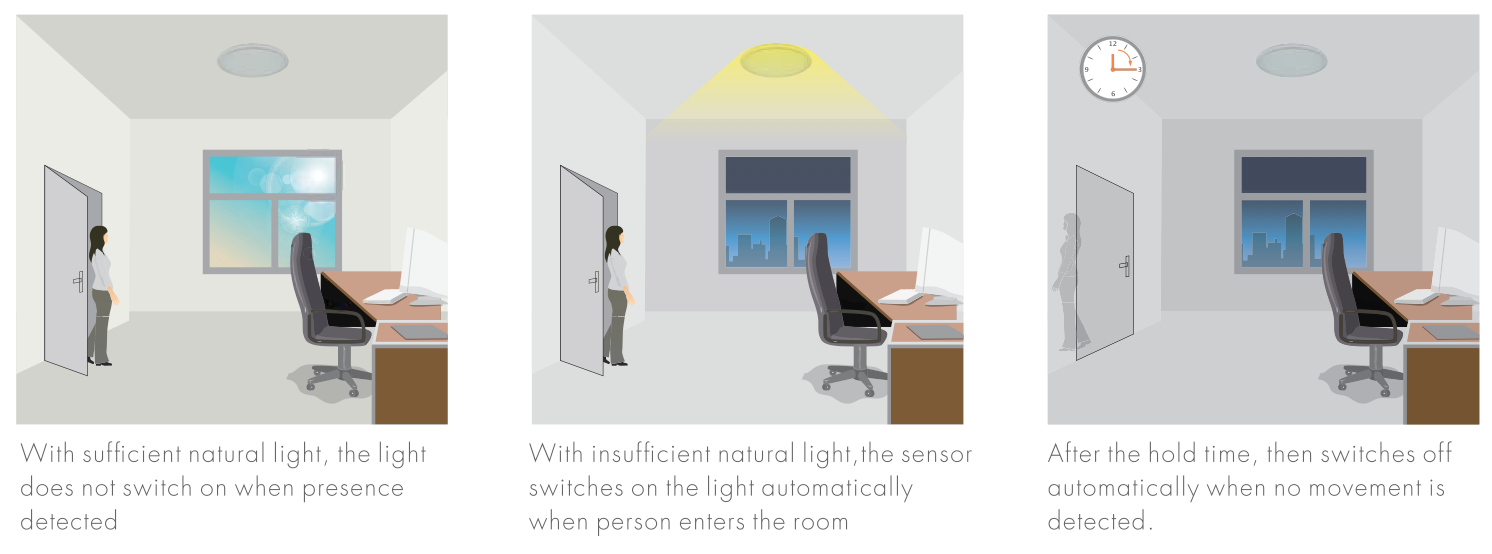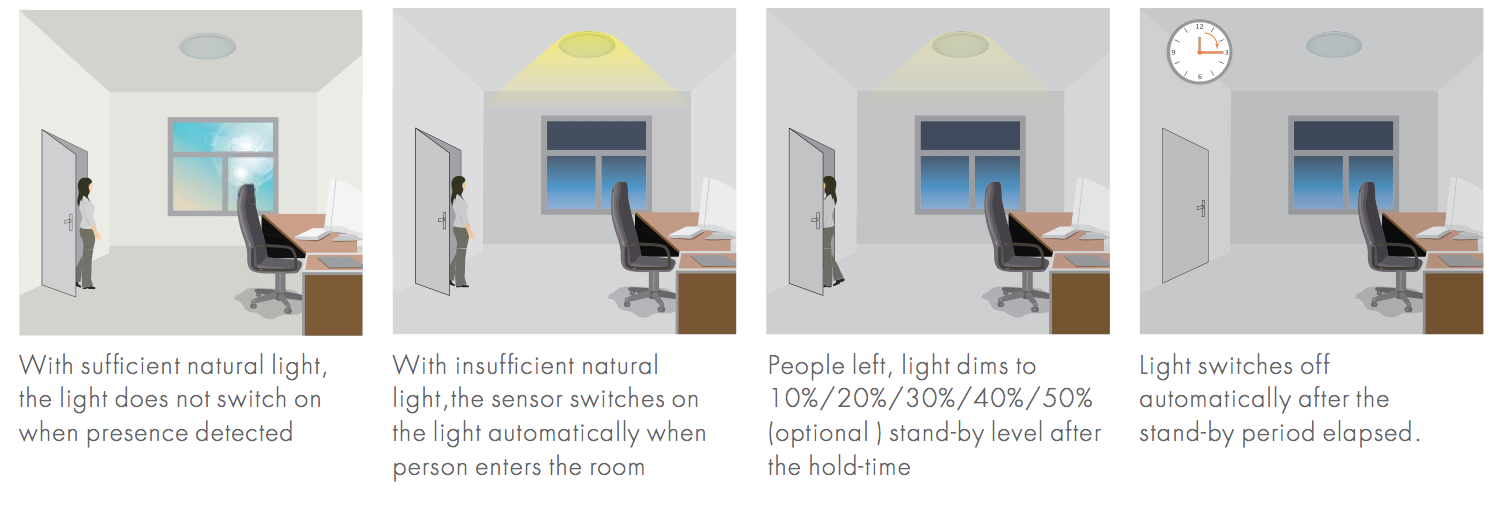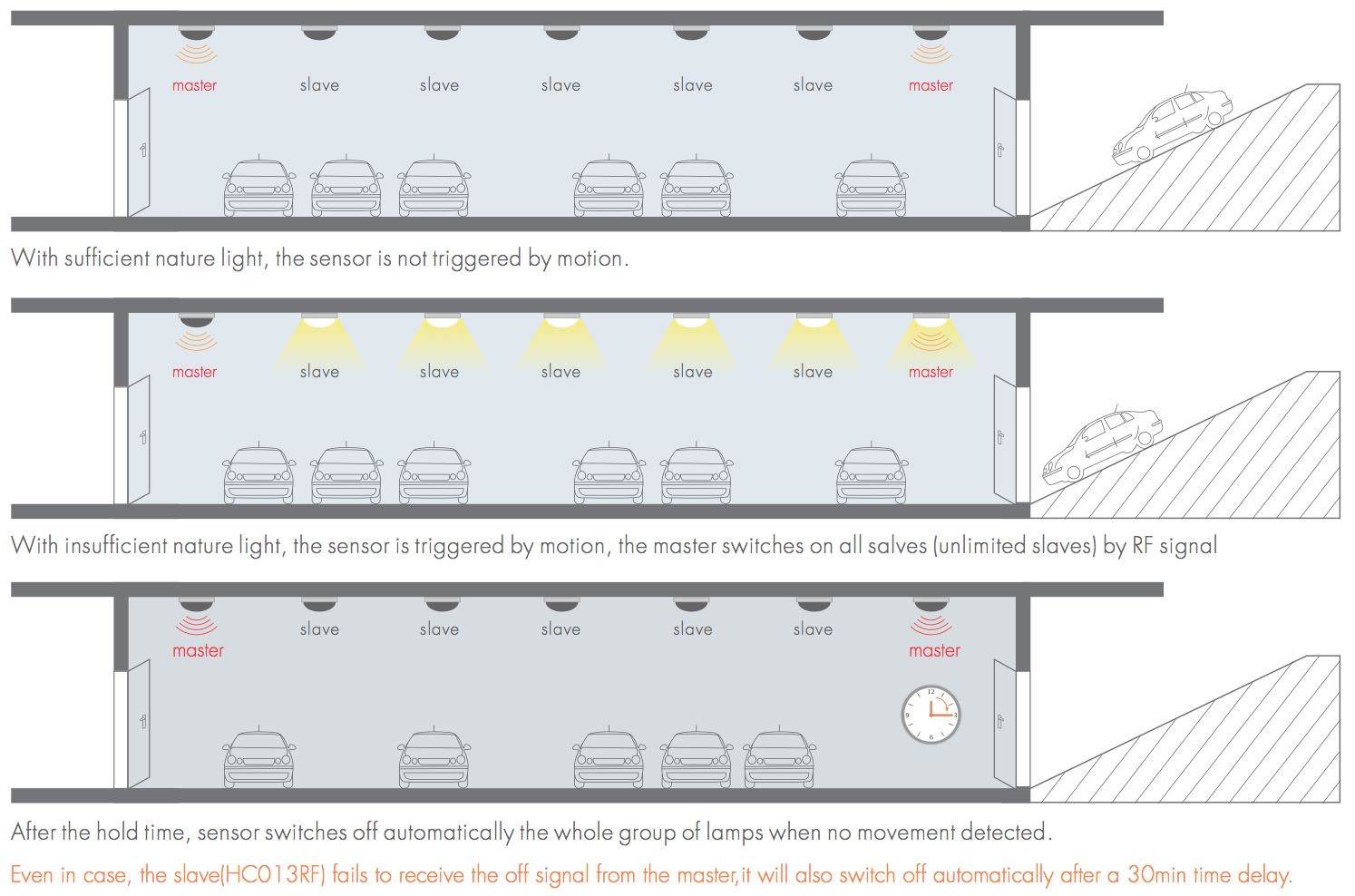Microwave detectors have mostly replaced PIR motion detecting sensors. These detectors work by emitting microwaves and measuring the reflected wave to detect motion. They are far more reliable than PIR sensors as they do not rely on changing temperatures to detect motion and can penetrate glass, plastic and even metal, thus allowing them to be housed inside a luminaire. Additionally, some variants of these sensors can detect ambient light levels, therefore allowing the user to customise when the light will function. Below are a few of the different sensor functions available:-
When movement is detected the light switches on. After a user-defined period of inactivity the light automatically switches off.
Possible Uses: Toilets, doorway entrances
When movement is detected the light switches on. After a chosen period of inactivity, the light dims down for a period of time, then switches off completely. It can also be set to be permanently on, staying dimmed when no movement is detected.
Possible Uses: Hallways, underpasses, offices, pedestrian walkways and cycling paths
If movement is detected by the 1st sensor (master sensor) it triggers other sensors, which are too far out of range to detect movement, to turn on via RF radio wave transmission. This is useful when an entire hallway or stairwell is to be lit when movement is detected, without having to wire each light together so they turn on in unison.
Possible Uses: Stair wells, car parks



